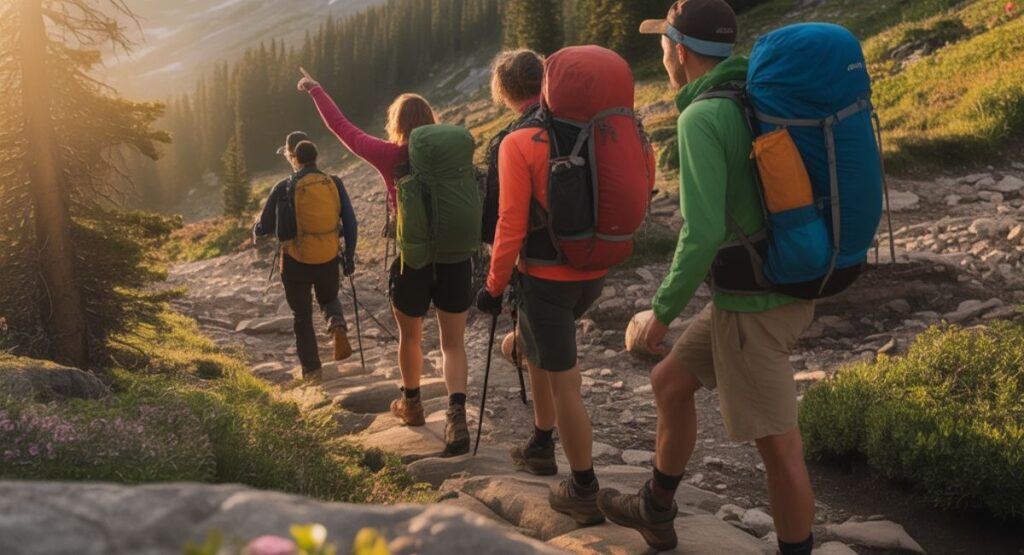
Outdoor adventure activities do not just deliver a sense of adventure but also provide a sense of strength in personal growth, connecting with others and finding renewal of the mind. The outdoors can be amazing, whether you are taking a group of youths out, finding new things to experience individually or organising school field trips. The article explains why, how and what of outdoor adventure activities, providing useful advice and inspiration.
What are outdoor Adventure activities?
Outdoor adventure activities are varied based on the experiences and involve a certain amount of challenge, risk, skill and teamwork in natural or semi-natural environments. The high-ropes activities, the kayaking, the orienteering in the woods, the raft-building in the lakes, these activities challenge the participants to go into areas where they are not used to working, to interact with the environment and with other people. The word focuses on adventure, but equally on action, that is, resulting in development, not recreation.
Reasons to engage in Outdoor Adventure Activities.
The outdoor adventure activities are compellingly worth the choice:
- Confidence & Self-esteem: Overcoming a climb or learning to row a canoe makes one believe in his or her abilities.
- Teamwork & Leadership: In numerous activities, the participants should coordinate with each other, communicate effectively and support each other.
- Physical and Mental Health: Being outside in the air, movement and challenge is a good activity that works to promote fitness and alleviate stress.
- Community with Nature: These practices enhance our relationship with the natural environment and usually foster environmental consciousness.
- Inclusion & Diversity: Well-designed programmes make sure that everyone, regardless of ability and background, is included. As an example, one organisation mentions that outdoor learning centres can serve the needs of young individuals with complex additional needs.
Forms of Outdoor Adventure Activities.
The following are the popular types of outdoor adventure activities you may encounter or to involved in:
- Archery & Target Sports
- Climbing & Abseiling
- Zip-Lines and High-Ropes Courses.
- Kayaking, Paddle Sports & Sailing.
- Raft-Building and Team Water Challenges.
- Bushcraft & Survival Skills
- Outdoor Navigation and Orienteering.
- Mobile Mobility Activities (to include access)
Planning and Safety.
In the planning of outdoor adventure activities, strict planning and safety are the most important:
- Certified Facilities and Qualified Instructors: Make sure that the staff is trained, certified and aware of risk management.
- Inclusive Access: It should be done to accommodate the members of all abilities, the time of designing should accommodate the average member. The quote provided above highlights this accommodating attitude.
- Equipment and gear: Helmets, harnesses, buoyancy aids, protective clothes and weather-related gear may not be discussed.
- Pre-Activity Briefing: The participants need to be aware of the purpose, rules, risks and expectations.
- Emergency Procedures: There should be clear procedures for maintaining incidents, first-aid provision and communication.
- Environmental Impact: The activities must comply with and conserve the natural environment, in line with the lean-no-trace principle.
Adapting to the Various Groups.
Each group is accompanied by its specific needs: age, ability, previous experience and purpose all count:
- Schools can be curriculum-linked (e.g. geography fieldwork, environmental science) or developmental (e.g. resilience and leadership).
- Social bonding, confidence building and fun are the other values that Youth Groups tend to focus on.
- Corporate Teams (but at least not part of youth-focused activities) can use outdoor adventure activities to build their team and train management.
- Inclusive Groups involve special accommodations – e.g. specialist equipment, extra staffing or special challenge level – to be sure that everyone participates and is safe.
Incorporating the Outdoor Adventure Activities in Programmes.
In order to reap the most benefits out of these activities, they should be incorporated in larger educational or recreational programmes:
- Pre-Activity Learning: Orient the participants to the setting, skills or teamwork models at the classroom or workshop levels.
- In the Process: Reflection, Peer support and active debriefing: How did we do well? What challenged us? How did we overcome it?
- Follow-Up of the Activity: Connect the learning with real life: self-confidence achieved, teamwork was experienced, and respect for the environment has been developed. This assists in entrenching long-term benefit.
- Connection to Awards or Recognitions: As an example, organisations run avenues that are in line with established awards (including the Duke of Edinburgh’s Award), which add both motivation and organisation.
Conclusion
Outdoor adventure activities are not just exciting activities but they are life-changing activities as they instill confidence in our personalities, teamwork, leadership, well-being and a stronger bond with the environment in which we live. Be it a school trip, youth group outing, or just a need to get out and have a new experience, the right programme and provider will make the time spent outdoors of long-term value. Take the challenge and enter nature and see the benefits as they come.


